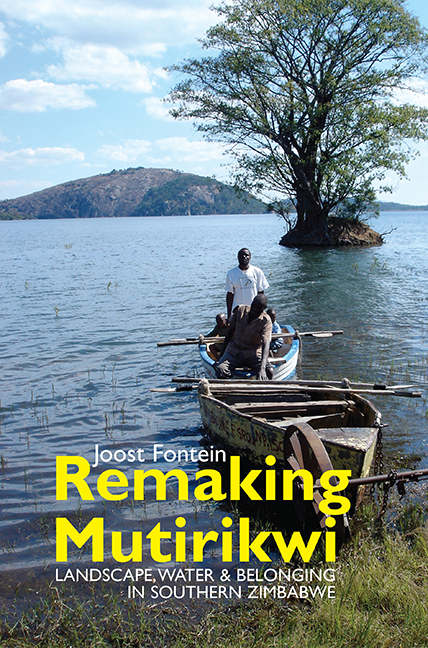Book contents
- Frontmatter
- Dedication
- Contents
- Illustrations
- Acknowledgements
- Note on Fieldwork, Notes & Sources
- Glossary
- Acronyms & Abbreviations
- Chronology
- Remaking Mutirikwi: An Introduction
- Part One Remaking Mutirikwi in the 2000s
- Part Two Damming Mutirikwi 1940s–1990s
- Epilogue: Remaking Mutirikwi in the late 2000s & early 2010s
- Bibliography
- Index
- Eastern African Studies
6 - New White Futures, New Rhodesian Settlers and Large-scale Irrigation, 1940s–1950s
Published online by Cambridge University Press: 11 June 2021
- Frontmatter
- Dedication
- Contents
- Illustrations
- Acknowledgements
- Note on Fieldwork, Notes & Sources
- Glossary
- Acronyms & Abbreviations
- Chronology
- Remaking Mutirikwi: An Introduction
- Part One Remaking Mutirikwi in the 2000s
- Part Two Damming Mutirikwi 1940s–1990s
- Epilogue: Remaking Mutirikwi in the late 2000s & early 2010s
- Bibliography
- Index
- Eastern African Studies
Summary
The building of the Mutirikwi or Kyle dam was completed in December 1960. It was formally opened in early 1961, culminating a period of increasingly ambitious irrigation and water planning across Southern Rhodesia. This chapter examines how dam building and irrigation planning, at Mutirikwi and elsewhere, between the late 1940s and 1960s – around the decade of the Central African Federation (1953–63) – was closely bound up with new contested, imagined futures for Southern Rhodesia, the Federation, and more generally European presence and belonging in the region, at a time of both ‘high-modernist’ optimism and growing momentum for decolonisation across the continent. These futures circulated around the potential that irrigation offered for increased agricultural production, for self-sufficiency in food, and for the industrialisation and European settlement of Southern Rhodesia's lowveld. They were also entangled with the complex and ultimately unresolved politics of how responsibility for European and Native irrigation planning, agriculture, natural resources and immigration, were to be divided up between the Southern Rhodesian and Federal governments. Apart from the politics of the Federation and its Territories (Southern Rhodesia, Northern Rhodesia and Nyasaland), the building of the Kyle dam was also bound up with older tensions between divergent localised futures and aspirations, particularly between Victoria residents and lowveld planters and industrialists.
In Rhodesia's early days water was key to securing white settlement, the appropriation of land for farms, and for the viability of native reserves. Between the late 1940s and the 1960s, however, water planning, especially dams for irrigation, achieved a new scale of significance. This was the period of intense modernisation across British colonial Africa that some have called the ‘second colonial occupation’ (Low and Lonsdale 1976:12–16). In Southern Rhodesia, it was marked by the optimism of the tobacco boom and growing industrialisation. It was also a time of labour shortages and shortfalls in food production. Both needed to be imported. These years witnessed renewed efforts to attract European settlers into the country – particularly soldiers demobilised after the Second World War but also sugar planters from South Africa, Holland and Mauritius – even as this provoked a new politics of protectionism, particularly between the Federal and Southern Rhodesian governments.
- Type
- Chapter
- Information
- Remaking MutirikwiLandscape, Water & Belonging in Southern Zimbabwe, pp. 170 - 196Publisher: Boydell & BrewerPrint publication year: 2015



